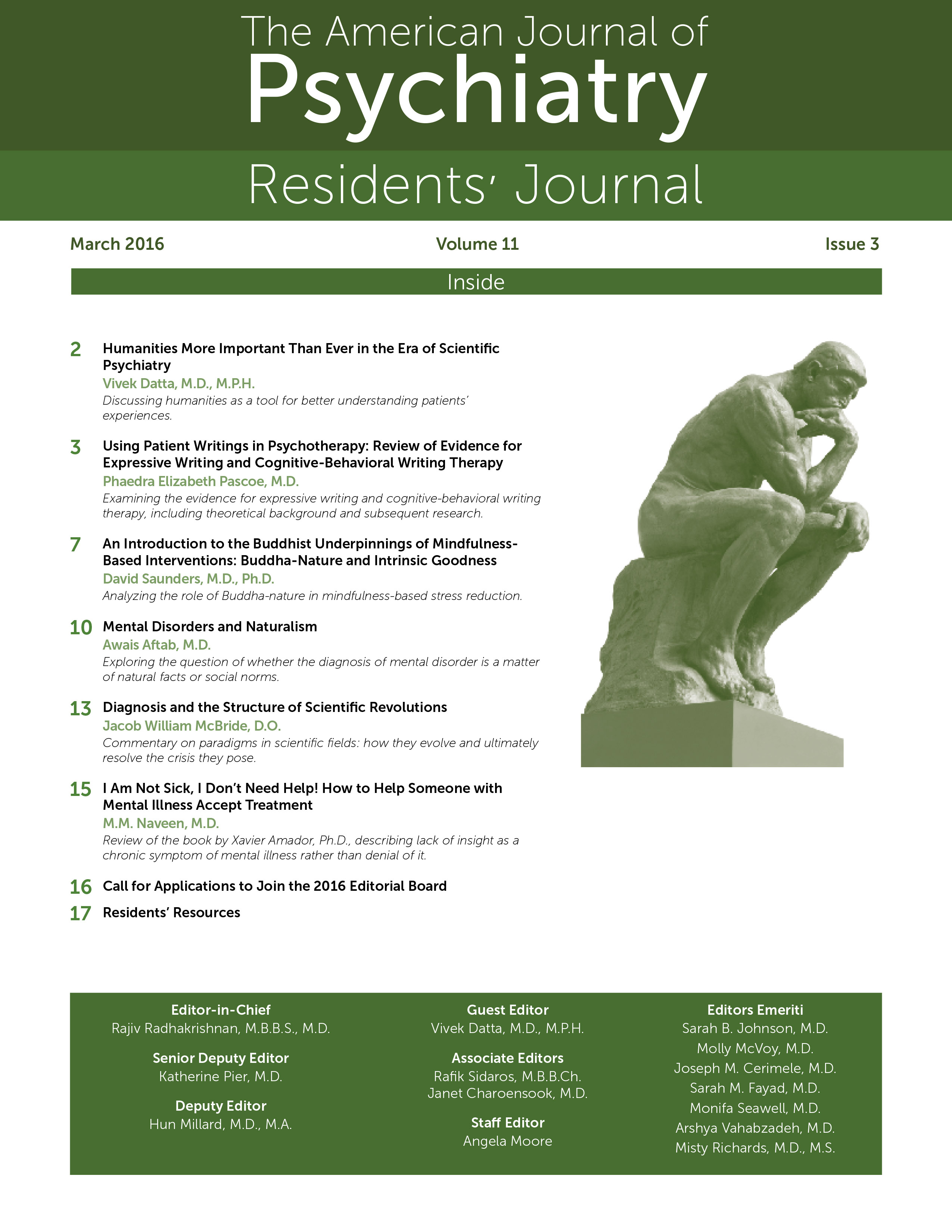The term “paradigm” carries many meanings in today’s discourse. In Thomas Kuhn’s Structure of Scientific Revolutions (
1), he uses the concept of a paradigm to describe how scientific fields undergo crisis, upheaval, and eventual revolution. A full understanding of this process and how it relates to the history of our field is necessary to understand how psychiatry has changed and may change again.
In Kuhn’s model, a paradigm is the intellectual structure that describes a whole scientific discipline’s worldview (
1). These large bodies of theories must be matched with actual observations about nature, and Kuhn calls this matching process “normal science (
1).” Normal science describes the day-to-day work of most scientists. When their daily toil produces a fact that doesn’t fit the theory, an anomaly emerges. As anomalies accumulate, paradigms are thrown into crisis, as experts and neophytes alike question the current paradigm’s ability to describe nature. Out of this conflict, new paradigms emerge. Through debate and political struggle, one paradigm becomes dominant and completely supplants the old one. Old textbooks are discarded, new curricula are written, and the past, present, and future of the field become dominated by the new paradigm.
The DSM provides psychiatry and its allied fields with a structure that guides the field, serving as psychiatry’s paradigm. DSM-I and II, based largely in psycho-dynamic and psycho-social theory, provided the grounding for normal science to occur. As normal science was conducted, however, many anomalies arose: The line between mental illness and health was unclear and, to some critics, arbitrary (
2). Furthermore, the diagnoses had low reliability, and advances in brief psychotherapy and psycho-pharmacology challenged the psycho-dynamic model (
3). Spurred on by the work of Robins and Guze in diagnostic reliability and the National Institute of Mental Health Research Diagnostic Criteria, a rival paradigm emerged conceptualizing mental illnesses not as a psychological state but as “discrete, operationally-defined disease categories (
3).” The DSM-III represented the victory of the latter paradigm, a victory that entailed profound and near-total reorientation of psychiatry’s research, resident training, and clinical practice.
Successful paradigms adapt to explain anomalies, and versions of the DSM subsequent to DSM-III reflect this. In an attempt to adapt to the previous DSM’s failures, each iteration modifies disease categories to allow the current paradigm to better fit facts observed in research and clinical practice. The predictions of our current paradigm, however, continue to yield anomalies rather than confirmations of theory. The paradigm aspires to disorders that separate well, but comorbidity, subsyndromal diagnoses, and broad unspecified diagnostic categories are common (
4). The genes associated with psychiatric disorders correlate poorly with the current DSM’s disorders. Treatments relate poorly to diagnostic categories as well. The antipsychotic quetiapine, to name one example, has been shown to be effective for diverse indications such as bipolar disorder and schizophrenia. Kuhnian theory predicts that as anomalies mount, our field will approach crisis. A paradigm in crisis invites the alternative lines of inquiry that precede scientific revolution. Advances in biology may allow for a paradigm that divides psychiatric disorders into etiology-based groups, rather than the current symptom-based syndromes (
5). Another alternative is to describe disorders along a spectrum rather than the current discrete categories. The information age allows still another alternative, as big-data strategies may allow for theory-free approaches. Over the past decade, a plethora of data-sharing consortia have arisen to share and mine functional MRI and other data in the hopes of achieving a “connectome,” a complete neural map (
6). With such a map, especially if coupled with behavioral correlates as the Human Connectome Project aspires to, a new theory can be built from the ground up (
7). Should any of these lines of inquiry prove superior in theory, practice, or convenience, they may lead to the rise of a new paradigm and eventually to scientific revolution.
